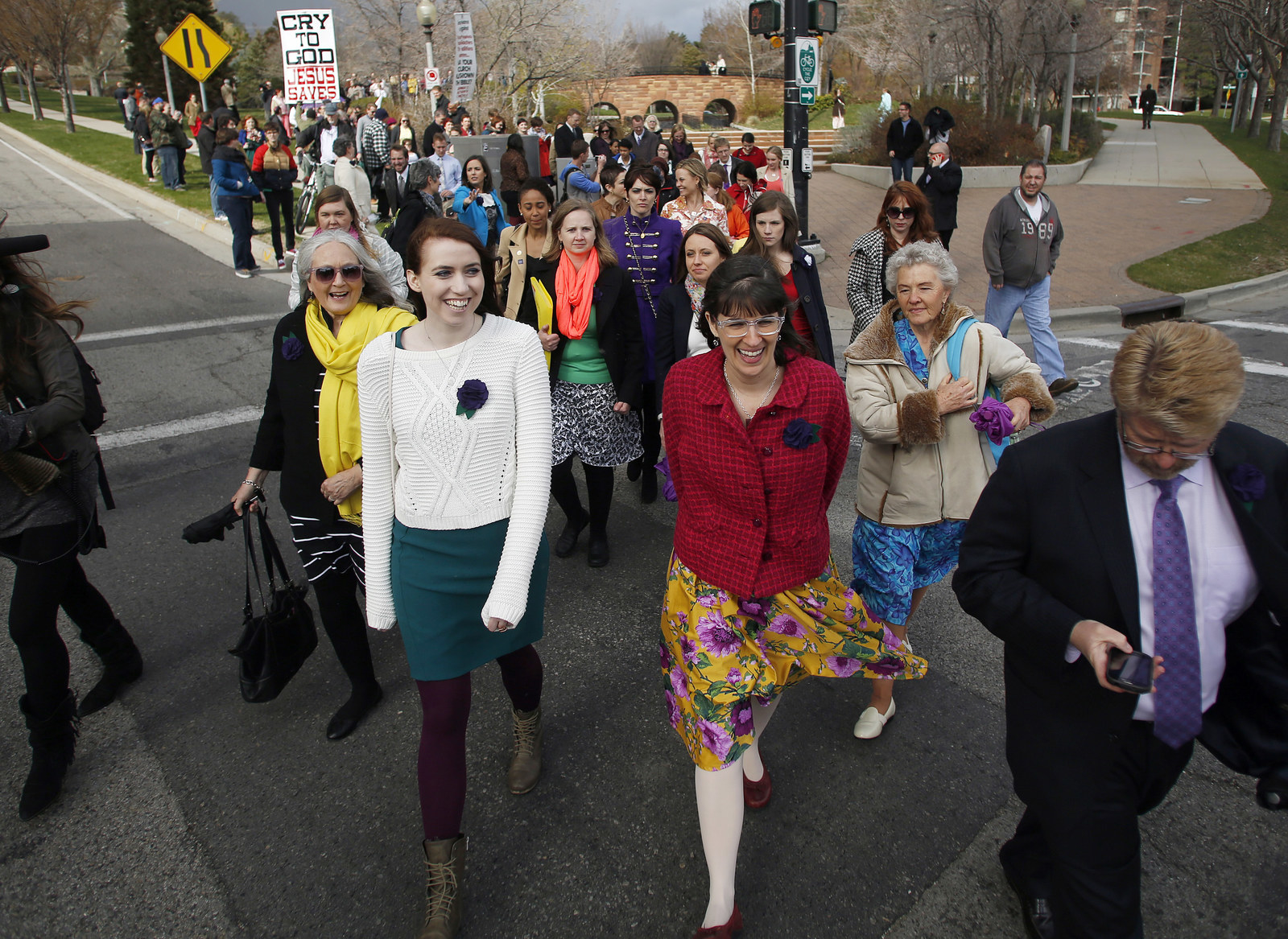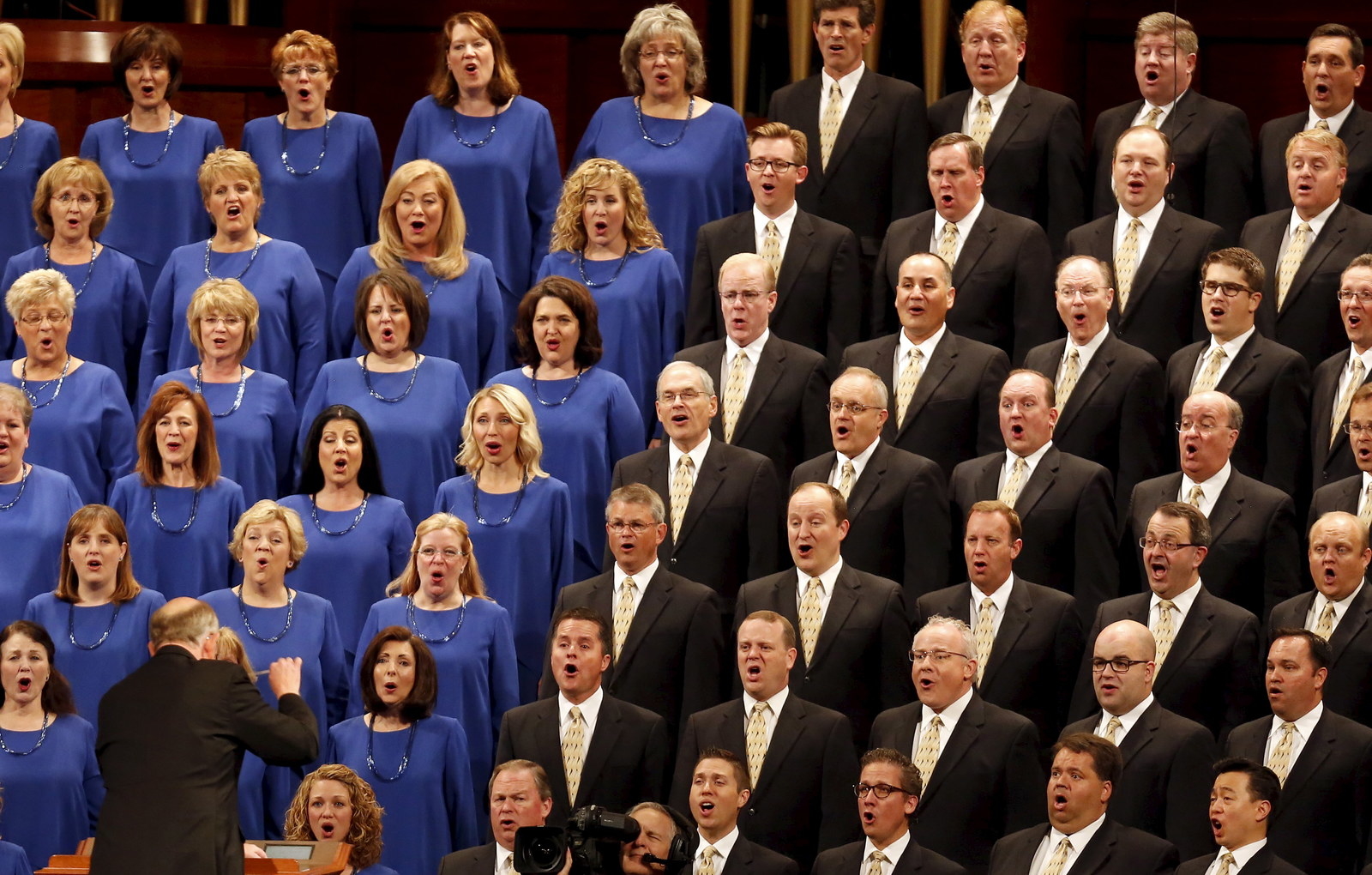
The Mormon church rolled out a handful of new policies for employees this week, some specifically for women, that observers say are the latest in the religion's subtle but long-running evolution toward greater gender equality.
The new policies are outlined in a memo The Church of Jesus Christ of Latter-day Saints sent to employees Wednesday and provided to BuzzFeed News. Most significantly, women employed by the church who give birth will now receive six weeks of paid leave. All new parents, including fathers, will also receive a week of paid leave "to bond with their new child(ren) from birth or adoption."
Perhaps more interesting, however, was the announcement that women employed by the church will now be allowed to wear "professional pantsuits and dress slacks" to work — rather than skirts and dresses as had long been required. The new dress code also allows men to wear colored dress shirts, rather than only white, and to remove their suit coats when it is warm.
Church spokesperson Doug Andersen told BuzzFeed News that "thousands of full-time employees will receive these benefits." Those employees are primarily based in the US, though some overseas employees will also be impacted by dress code changes.
"My opinion is, absolutely, this is part of a shift to a moderate stance on women’s issues."
Though at a glance the changes appear relatively small, progressive Mormons are celebrating the new policy as part of a larger and more significant trend of women assuming greater and more equal roles in the church. Libby Boss, a Massachusetts-based Mormon blogger who writes at the female-authored site the Exponent II, told BuzzFeed News that feminist Mormon Facebook groups "kind of blew up about it." She described the church's new leave policy as an acknowledgement that there are more single parent families today than in the past, and said the dress code changes signify to the faithful that "women don’t have to wear dresses all the time to be women."
"It’s such a huge step and I’m so proud of them," Boss said. "Of course I wish it had come 30 years ago."
The policy changes at the church are part of a recent trend that includes the Ordain Women movement, which has lobbied for female ordination to the church's lay ministry, last year's announcement that women serving missions in some parts of the world can wear slacks, and a series of mentions of "heavenly parents" instead of simply "heavenly father" at church-wide meetings.
"We’re seeing some progressive things happen," Boss said.
The new pants policy, she said, is a direct response to a feminist-tinged "wear pants to church day" movement that made headlines several years ago.

When asked about what led to the new policies, Anderson, the church spokesperson, said they are a "reflection of efforts to reinforce the important teaching that the family is central to our eternal destiny."
"I am sure there have been requests to modify work standards – as there would be in any organization – but I don’t see that as a primary driver here," Anderson said in an email. "It’s really that simple – this provides options for employees."
"The members themselves are kind of more progressive than the church hierarchy."
But Margaret Toscano also sees the policy changes as part of something larger. Toscano, a professor of world cultures and religion at the University of Utah, was the subject of a high-profile excommunication from the LDS church in 2000, though she told BuzzFeed News she still considers herself a member of the broader Mormon movement.
Toscano said the new parental leave and dress code changes fit into a broader story about Mormon women growing their influence. In 2013, for example, a woman offered a prayer for the first time at the church's worldwide conference, and in 2015 women were appointed to previously all-male leadership councils.
"The idea of women praying in general conference was an accommodation by leaders that if they don’t respond to women’s needs they're going to have people leave," Toscano said.
A progressive trend within Mormonism has been taking shape since the 1970s, though it often involves "taking four steps ahead, and then three steps back, and then another five steps ahead," Toscano said. Significantly, much of the evolution over the years has been prompted by grassroots action by faithful members who want change.
"The members themselves are kind of more progressive than the church hierarchy," Toscano said. "I see it as sort of the tension and ongoing negotiation."

Taylor Petrey, a Mormon and professor of religion at Kalamazoo College who has studied Mormon feminism, saw the new policies as a response to members pushing for change.
"I do think that some of the changes that the church has been undergoing in the last decade have been a response to moderate feminist criticisms," he told BuzzFeed News. "My opinion is, absolutely, this is part of a shift to a moderate stance on women’s issues."
That's a shift that could have surprisingly big repercussions on US culture. Mormonism has been thrust into the spotlight in recent years, thanks to everything from Mitt Romney's presidential aspirations to The Book of Mormon musical and the LDS church's cheeky response to it. For a relatively small religion based in a relatively unpopulated state, Mormons have been conspicuously prominent.

Of course, Mormonism remains, on the whole, a conservative culture. And many Mormons are certainly not watching for, or anticipating, what Boss described as a series of "progressive things." There have also been periods of backlash in church history against progressivism, such as during the tenure of Ezra Taft Benson, who led the church in the 1980s and early 90s.
Still, given the religion's outsize prominence in the US, even a gradual shift could reverberate far and wide across broader American culture.
In the meantime, however, progressive Mormons are celebrating the fact that they see a trend in the first place. Boss was among them, and referring to the elderly all-male top leadership, described the new policies as a "huge step for a very conservative minded, older group of men to make." And that's something Mormon feminists have been awaiting for years.
"My grandmother worked at [LDS church-owned Brigham Young University] and was paid a fraction of what her colleagues were," Boss said. "She was angry about that until she died. I hope she knows about this."
